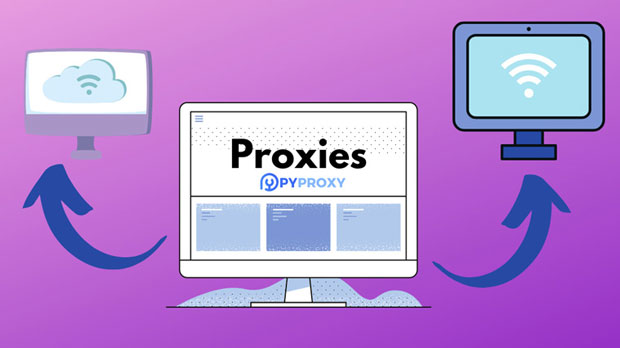sock s5 proxies are widely used for enhancing online privacy, bypassing geo-restrictions, and securing internet traffic. In dynamic IP environments, where the user's IP address frequently changes, SOCKS5 proxies have both distinct advantages and limitations. Their flexibility in handling dynamic IP addresses is particularly beneficial for users seeking anonymity, data protection, or access to location-based content. However, this same feature can present challenges, especially when considering connection stability, security, and service consistency. In this article, we will explore the various advantages and limitations of using SOCKS5 proxies in dynamic IP environments, providing insights that can guide users toward more informed decisions. 1. Advantages of SOCKS5 Proxies in Dynamic IP EnvironmentsThe use of SOCKS5 proxies in dynamic IP environments offers several compelling benefits that contribute to enhanced functionality, security, and user experience.1.1 Improved Anonymity and PrivacyOne of the primary advantages of using SOCKS5 proxies is the ability to mask the user's real IP address, which is crucial for preserving anonymity online. In dynamic IP environments, where the IP address frequently changes, SOCKS5 proxies allow users to continuously disguise their actual location and identity. This is especially useful for individuals who need to maintain privacy while browsing the internet or engaging in activities such as online shopping or research, where personal data protection is essential.1.2 Flexibility in Changing IP AddressesDynamic IP addresses are commonly assigned by ISPs (Internet Service Providers), and they change periodically. SOCKS5 proxies excel in adapting to these changes, ensuring seamless transitions between different IP addresses. This allows users to maintain uninterrupted access to online services and ensures that they can frequently refresh their connection to avoid IP tracking and blocking.1.3 Bypassing Geographical RestrictionsAnother significant advantage of SOCKS5 proxies in dynamic IP environments is their ability to bypass geo-restrictions. By using SOCKS5 proxies, users can route their internet traffic through servers located in different geographical regions, allowing them to access content that would otherwise be unavailable in their location. This is particularly beneficial for accessing streaming services, websites, or applications with regional content restrictions.1.4 Enhanced Security FeaturesSOCKS5 proxies are generally more secure than their predecessors, such as SOCKS4, due to the added support for authentication. In a dynamic IP environment, this feature ensures that only authorized users can access the proxy service, further enhancing security and preventing unauthorized access. Additionally, SOCKS5 proxies support secure protocols for data transmission, helping to protect sensitive information from potential cyber threats.2. Limitations of SOCKS5 Proxies in Dynamic IP EnvironmentsWhile SOCKS5 proxies provide a range of benefits, there are certain limitations to consider, especially in dynamic IP environments.2.1 Connection InstabilityThe dynamic nature of IP addresses in these environments can lead to connection instability. Since the IP address changes periodically, users may experience interruptions or delays in their proxy connections, which could affect their online experience. This is particularly noticeable for tasks that require continuous and reliable connectivity, such as online gaming, video streaming, or VOIP calls.2.2 Security Risks and TrackingAlthough SOCKS5 proxies provide enhanced security features, the dynamic nature of IP addresses can sometimes work against the user's security efforts. As the IP address changes frequently, there is a possibility that online activities may be traced through inconsistencies in the user's connection. If multiple proxy requests come from different IP addresses within a short period, it could raise suspicions and trigger security measures from websites or online services. This makes it harder to maintain consistent anonymity in some cases.2.3 Service Reliability and LatencyThe use of SOCKS5 proxies in dynamic IP environments can also introduce issues with service reliability. Because the proxy server's IP address is changing frequently, it may take time for users to establish a stable connection with the proxy server. This can result in increased latency and slower connection speeds, which can be frustrating for users engaged in bandwidth-intensive activities like video streaming or large file downloads.2.4 Limited Support for Some ApplicationsCertain applications may not fully support SOCKS5 proxies, especially when dynamic IP addresses are involved. Some software, particularly those relying on persistent connections (such as email clients or remote desktop applications), may experience difficulties in maintaining the connection when the IP address changes. This can lead to a degraded user experience, requiring additional troubleshooting and configuration to address compatibility issues.3. Use Cases for SOCKS5 Proxies in Dynamic IP EnvironmentsDespite the limitations, SOCKS5 proxies are still widely used in dynamic IP environments for a range of applications.3.1 Internet Privacy ProtectionFor individuals seeking privacy online, SOCKS5 proxies remain an effective tool. They can be used to anonymize internet traffic, ensuring that personal data and online activities remain protected, even in dynamic IP settings. This is particularly valuable for those concerned about surveillance, data mining, or unwanted tracking.3.2 Access to Geo-Restricted ContentFor users who want to access content that is restricted by geographical location, SOCKS5 proxies provide a reliable method for bypassing these restrictions. Whether it's accessing streaming platforms, online marketplaces, or news sites, SOCKS5 proxies allow users to appear as though they are located in a different region, enabling unrestricted access to the desired content.3.3 Enhanced Security for Sensitive TransactionsSOCKS5 proxies can also be used to secure sensitive transactions, such as online banking or shopping, by providing an additional layer of encryption and privacy. In dynamic IP environments, the changing IP address adds an extra level of security, making it harder for cybercriminals to target specific users.4. ConclusionSOCKS5 proxies offer numerous advantages in dynamic IP environments, such as improved anonymity, flexibility, geo-restriction bypass, and enhanced security. However, the limitations, including connection instability, security risks, and compatibility issues, must be carefully considered. By understanding these strengths and weaknesses, users can make more informed decisions about when and how to use SOCKS5 proxies for their online activities. Ultimately, SOCKS5 proxies remain a powerful tool for users looking to protect their privacy, enhance their security, and access content in a dynamic IP environment.
Jun 30, 2025


































































